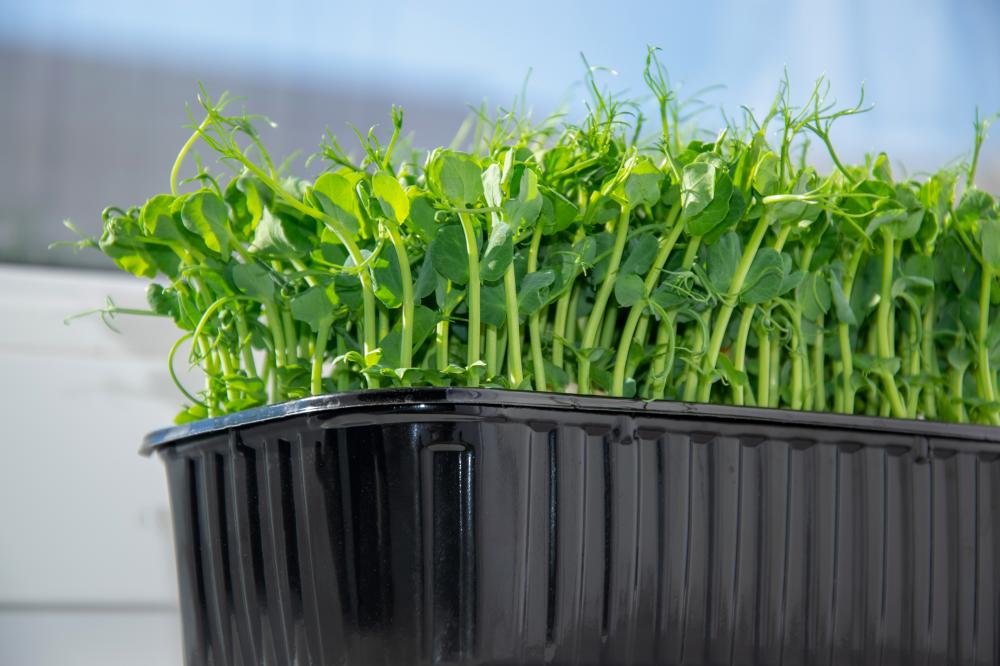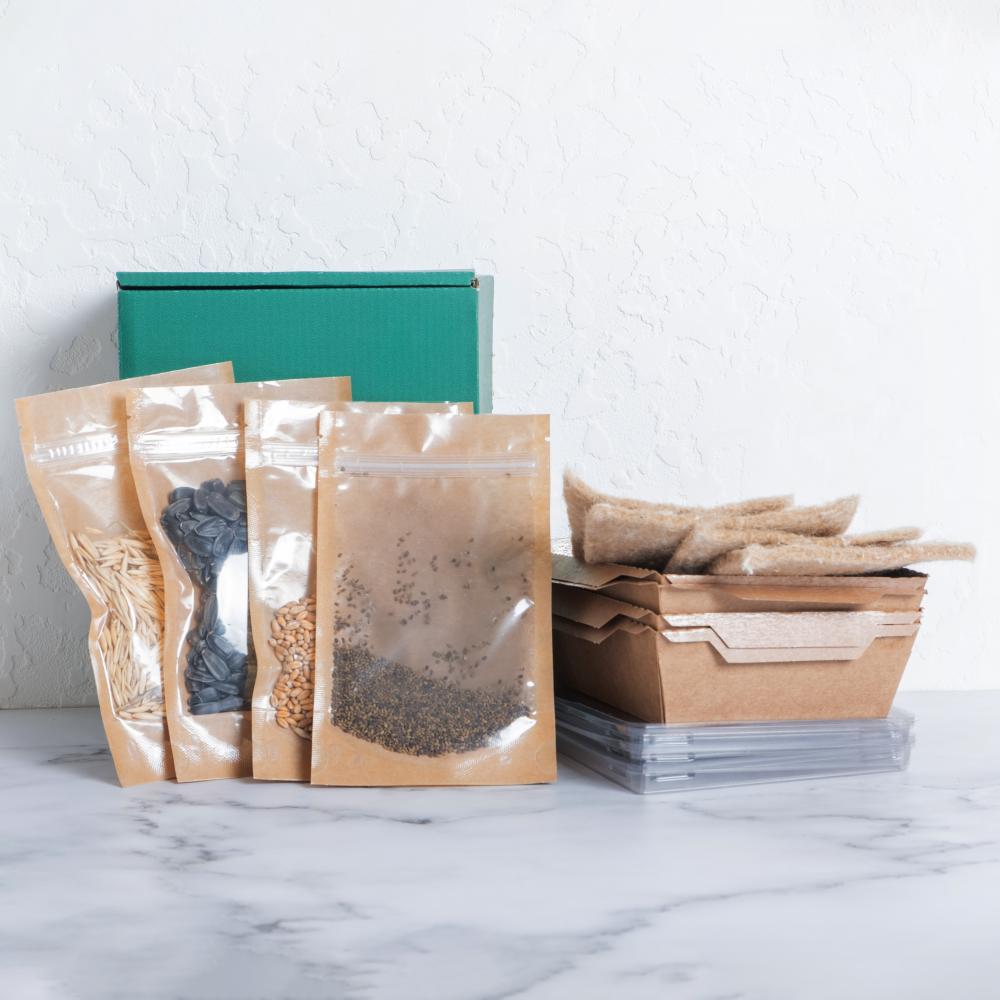
Introduction to Microgreens
Welcome to RightFit Gardens, where we believe in sowing the seeds of knowledge to cultivate a greener, happier world. Today, let’s dive into the verdant world of microgreens, those tiny but mighty plants that are revolutionizing the way we think about gardening and nutrition. At RightFit Gardens, we’ve seen firsthand how integrating microgreens into your gardening and dietary practices can yield immense benefits, not just for personal health but for our planet as well.
What Are Microgreens?
Microgreens are the young seedlings of edible vegetables and herbs harvested just after the first leaves, known as cotyledons, have developed. They are usually harvested 7 to 21 days after germination, depending on the species. Packed with flavor, nutrients, and vibrant colors, microgreens can be an excellent addition to a variety of dishes, from salads to soups.
Benefits of Microgreens
The buzz around microgreens is well-earned. They are not only a delight to grow but also offer a powerhouse of nutrients. Studies have shown that microgreens contain higher levels of vitamins and antioxidants compared to their mature counterparts. Incorporating microgreens into your diet can contribute to improved heart health, reduced risk of chronic disease, and enhanced nutrient intake.
Growing Microgreens at Home
Growing your own microgreens can be an incredibly rewarding experience. It’s a simple process that doesn’t require a lot of space, making it accessible for urban dwellers or those without a traditional garden. All you need is high-quality seeds, a growing medium like soil or a hydroponic mat, some water, and lots of love.
Here at RightFit Gardens, we’ve experimented with various methods and found hydroponics to be an efficient and sustainable way to grow microgreens. Hydroponic gardening, or soil-less gardening, allows plants to grow faster and healthier since they receive nutrients directly from the water, reducing the risk of soil-borne diseases.
Microgreens vs. Sprouts
It’s common for people to confuse microgreens with sprouts, but there are distinct differences between the two. Sprouts are germinated seeds that are eaten whole, including the root and seed, usually within a week of germination. Microgreens, on the other hand, are harvested without the roots and have a slightly longer growth cycle. This distinction is important not just for culinary purposes but also for understanding the nutritional content and growing methods suited for each.
Culinary Uses of Microgreens
One of the joys of microgreens is their versatility in the kitchen. Their intense flavors and textures make them perfect for garnishing dishes, adding to smoothies, or creating vibrant salads. Each variety of microgreen has its unique taste, from the peppery punch of radish microgreens to the delicate sweetness of pea shoots. Exploring these flavors can turn an ordinary meal into a gourmet delight.
Most Popular Microgreens
- Broccoli microgreens are known for their cancer-fighting compounds.
- Radish microgreens add a spicy kick to any dish.
- Pea shoots offer a sweet, crunchy texture ideal for salads.
- Sunflower microgreens are nutty and packed with healthy fats.
- Arugula microgreens bring a peppery zest, perfect for Italian dishes.
Challenges and Solutions in Growing Microgreens
Growing microgreens, like any gardening venture, can come with its set of challenges. One common issue is mold growth, often due to improper ventilation or overwatering. At RightFit Gardens, we’ve found that ensuring a well-ventilated area and using a spray bottle for gentle watering can significantly reduce these risks. Another challenge can be selecting the right growing medium. While peat moss is popular, experimenting with coconut coir or hydroponic mats might offer better results for some.
My Personal Experience with Microgreens
As someone who has enthusiastically embraced the world of microgreens, I’ve experienced the profound satisfaction of harvesting my fresh greens just steps from my kitchen. The process of watching these tiny seeds sprout into a lush canopy of green is nothing short of magical. It’s also given me a deeper appreciation for the resilience and the delicate complexity of plants. Growing microgreens has been a journey of discovery, not just about gardening techniques but also about the nutritional powerhouse these small plants can be.
Microgreens offer a unique blend of nutritional benefits, ease of growth, and culinary versatility that is unmatched by many other plants. Whether you’re a seasoned gardener or a curious newcomer, the world of microgreens holds something special for you. At RightFit Gardens, we’re committed to helping you discover the joy and satisfaction of growing your microgreens. Join us in this green adventure, and let’s cultivate a healthier, happier world together.

What is so special about microgreens?
At RightFit Gardens, we often marvel at the simplicity yet profound impact of microgreens. What makes them truly special is their concentrated nutrient profile. Imagine enjoying the flavor and nutritional benefits of a full-grown vegetable or herb packed into its tiny seedling form. Microgreens can contain up to 40 times the nutrients of their mature counterparts, making them a superfood in a tiny package. They’re not just a culinary delight; they’re a testament to the saying “good things come in small packages.” Incorporating microgreens into your meals is an easy, flavorful way to boost your health.
What are the healthiest microgreens?
In the diverse world of microgreens, some stand out for their exceptional nutritional benefits. Broccoli microgreens, for instance, are a powerhouse of vitamins and minerals, including Vitamin C and E, potassium, and iron, not to mention they’re rich in sulforaphane, a compound noted for its cancer-fighting properties. Then there are pea shoots, brimming with Vitamin A, C, and folate, crucial for a variety of body functions including immune health and cell growth. At RightFit Gardens, we encourage exploring different types to find not only the healthiest but those that complement your palate the best.
Can you eat microgreens everyday?
Absolutely! Incorporating microgreens into your daily diet is a splendid way to enhance your nutrient intake without much effort. Whether it’s adding a handful of radish microgreens to your morning omelette or garnishing your evening soup with pea shoots, these small greens can deliver both flavor and nutritional boosts to everyday meals. However, like anything in life, variety and moderation are key. We advocate for a balanced diet, where microgreens serve as a vibrant component, not the sole element. Mixing up the types of microgreens you consume can also help ensure you’re getting a wide range of nutrients.
Do microgreens regrow after cutting?
This is a common query at RightFit Gardens, and the answer largely depends on the type of microgreen. Most microgreens do not regrow after harvesting because they are cut at such an early stage in their growth cycle, removing the crucial growing point of the plant. However, some varieties, like certain types of lettuce or kale, can produce a second or even third crop if harvested carefully above the first true leaf set. But for most, it’s a one-time deal, which is why we recommend sowing seeds successively or in batches to maintain a continuous harvest.
What are some challenges you might face when growing microgreens, and how can you overcome them?
While growing microgreens is relatively straightforward, it’s not without its challenges. One of the main issues our community at RightFit Gardens encounters is mold or fungus, often due to overwatering or insufficient airflow. The solution lies in balancing moisture and ensuring your growing environment is well-ventilated. Additionally, selecting the right medium can make a significant difference; for instance, coconut coir or hydroponic mats often provide better aeration compared to traditional soil. Don’t let these challenges discourage you. With a bit of trial and error and constant attention to the needs of your greens, you’ll soon find your groove.
How do microgreens compare to sprouts in terms of nutrition and safety?
While both microgreens and sprouts are nutritional powerhouses, they differ significantly in their growing conditions and consumption. Sprouts are grown in water and are harvested within a week, eaten whole, including the seed and root. This method, however, can pose a risk of bacterial contamination like salmonella or E. coli. Microgreens, grown in soil or a hydroponic medium and harvested after the cotyledons have fully developed, are less susceptible to these risks due to their growing method and the fact that they are generally washed before consumption. Nutritionally, both offer intense nutrient profiles, though microgreens have the edge in diversity since you’re consuming the young leaves, rich in vitamins, minerals, and antioxidants. At RightFit Gardens, we’re proponents of both, advocating for safe growing practices to enjoy their full health benefits.
Resources
- Penn State Extension – Growing Microgreens at Home – A comprehensive guide on how to grow microgreens at home, including tips on choosing seeds and growing mediums.
- National Center for Biotechnology Information – Nutritional Content of Microgreens – An in-depth study on the nutritional benefits of microgreens compared to mature plants.
- USDA Agricultural Research Service – Antioxidants and Health – Information on the role of antioxidants in promoting health and reducing the risk of chronic diseases.
- University of Minnesota Extension – Hydroponic Gardening – A guide to hydroponic gardening for home gardeners, including information on nutrient delivery and plant health.
- U.S. Food and Drug Administration – Tips for Young Children and Microgreens – Safety tips for introducing microgreens to young children to ensure a healthy and enjoyable culinary experience.

